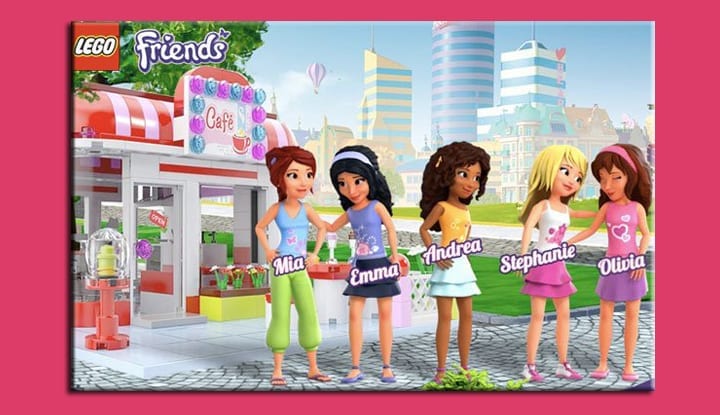 I took my 6-year-old son to the toy section recently to find a birthday gift for his friend Tessa.
I took my 6-year-old son to the toy section recently to find a birthday gift for his friend Tessa.
As a kid with no sisters, I knew this would be a great opportunity to follow him around the aisles and observe my little LEGO master in his boyish decision-making.
Do you remember growing up playing with LEGOs? I don’t. I was a Little People kid who loved making houses and roads out of wooden blocks. And yes, I dressed up and cut the hair off my Barbies. I learned that tough lesson that Barbie hair doesn’t grow back. But LEGOs aren’t part of those distant playtime memories. Even my feminist mother, who spun “Free to Be You and Me” on the record player and wanted my sister and me to understand we were just as capable as boys didn’t put LEGOs in my toy box.
Was it because marketers of the 70s and 80s led her to believe LEGOs weren’t for her girls? (Hey the jingle for “Zack the LEGO Maniac” still runs through my mind when I watch my own 6-year-old play with his LEGOS today.)

Now, LEGOs come in pink and various complementary shades of pastel. They’re called “Friends” and you can make pretty houses with them. The little girl actresses in the TV commercial are wearing blush and lipstick. Their LEGO Friends are ready for a party, decorating their homes, and going to the beauty shop or cupcake café. What would Zack the Maniac think?

Is this new LEGO product line and related advertising derogatory? Is it gender stereotyping? Many parent consumers say yes, that this type of marketing perpetuates the “dumbing down” of girls.
But perhaps it’s an extended hand to an under-served market?
Women are finally exceeding men at attaining graduate and post-graduate degrees. But in fields like architecture and engineering, men still dominate. If a beloved toy like LEGO gets a feminine make-over and engages pink-loving girls, could that actually help turn more girls on to how much fun it can be to plan, build and create? Could that help grab the attention of those girly-girls’ moms, the ones with the purse-strings and the ones who know their daughters’ interests best, and get building blocks into the hands of more girls? Or should LEGOs for girls look more like the ones obviously marketed to boys?
My son, perusing those pink-washed toy aisles wasn’t impressed by LEGO Friends. He stared at them for a few minutes but announced, “Tessa doesn’t like LEGOs.” Perhaps Tessa really doesn’t like LEGOs, or perhaps my son has bought in to the gender stereotyping perpetuated by marketing and advertising. Or maybe he is a marketing prodigy who doesn’t buy into pink washing products. Who knows? (Actually, he was convinced he should get her “a mermaid doll I have seen on TV and is available at Target!” Exact quote. Ah, TV ads.)
Opponents of LEGO Friends and similar “pink” versions of typically male-targeted toys argue that pink washing dumbs down girls. But is that like saying girls need to be interested in “boyish” toys to not be considered dumb? What kind of statement is that on girly-girls?
What do you think? Should our daughters be marketed to in the same way as our sons?





